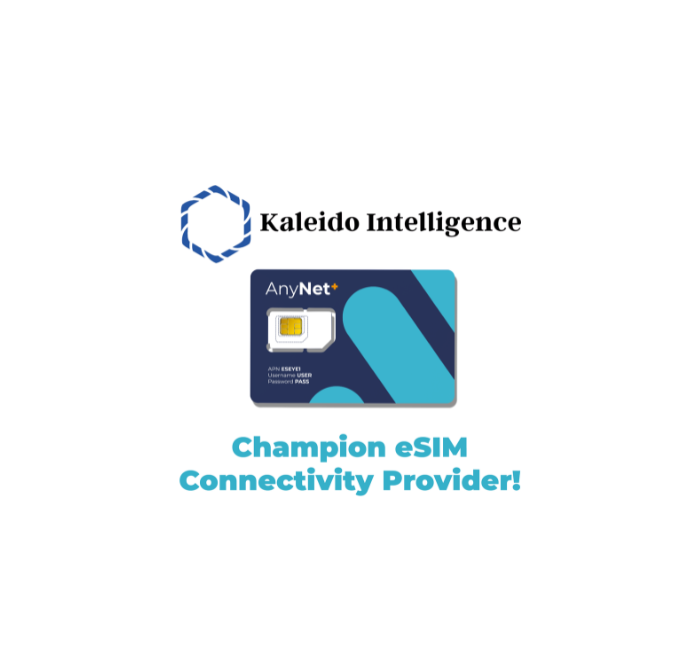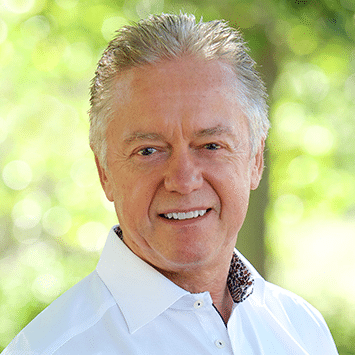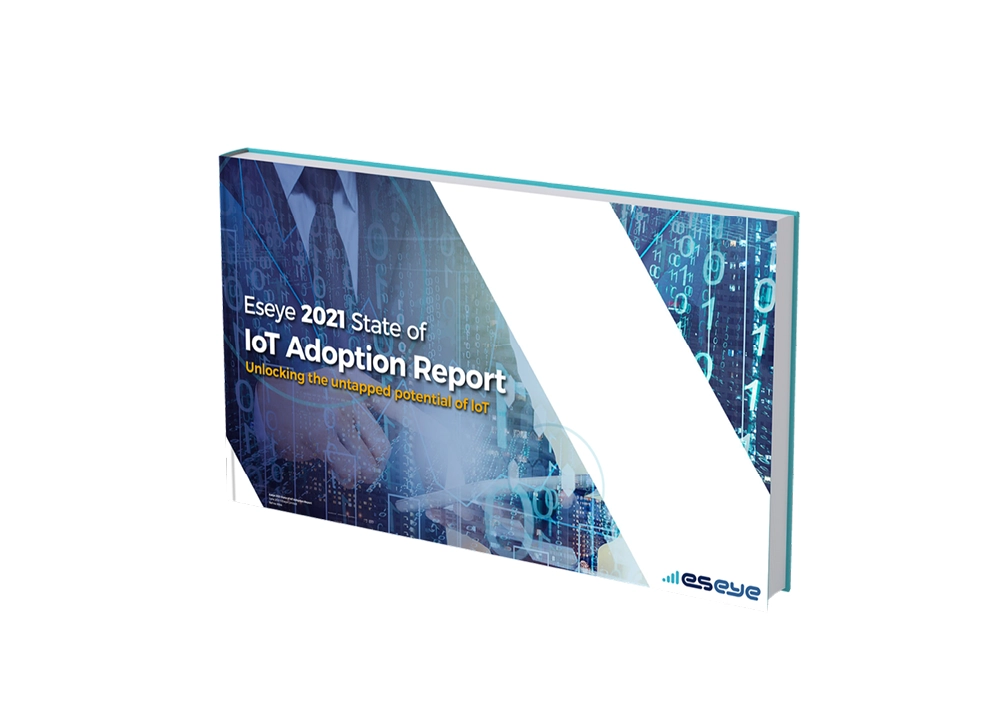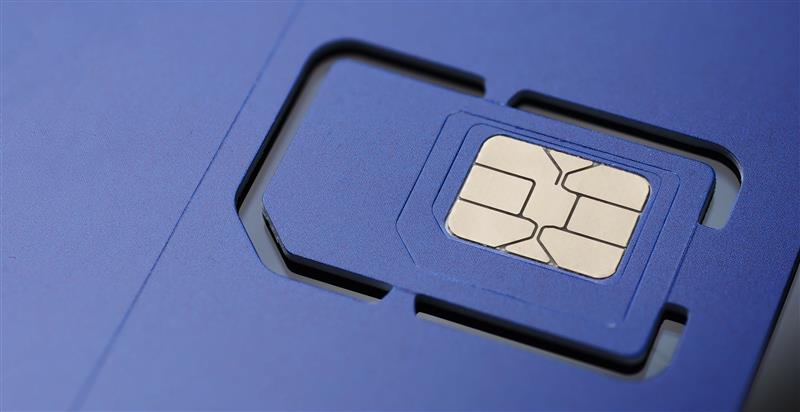The IoT industry is at a turning point.
Fragmentation has exposed deep cracks in connectivity models, while 5G promises speeds that legacy frameworks simply can’t handle. However, a solution may lie in rethinking how IoT connections work.
In this episode, Lee Walkey, a seasoned IoT expert, joins Nick Earle to explore the roadblocks and realities of building scalable IoT networks. They discuss:
- Why traditional roaming can’t support global IoT deployment
- How commercial incentives and outdated models hold back progress
- The need for a federated approach to achieve out-of-the-box IoT connectivity
Nick and Lee reveal how an airline-style federation of operators, combined with SaaS-based platforms, offers a way forward. They also explore how this shift could change the IoT sector as 5G expands.
Tune in to learn why it’s time to move beyond roaming, rethink connectivity, and build the future of IoT.
Subscribe to IoT Leaders
Ready to take the mic?
Join us on the IoT Leaders Podcast and share your stories about IoT, digital transformation and innovation with host, Nick Earle.
Transcript
Intro:
You are listening to IoT Leaders, a podcast from Eseye that shares real IoT stories from the field about digital transformation, lessons learned, success stories, and innovation strategies that work.
Nick Earle:
Hi, this is Nick Earle. Well today on IoT Leaders, we’ve got what our guest calls in his own words, a controversial one. His name’s Lee Walkey. And you’ll hear him introduce himself. He’s currently now an IoT communications consultant in the UK, but he has had a fairly long career, working for multiple IoT companies, and as a result of that has come to the conclusion of that.
There is something missing in all of the models that he’s seen, which, have collectively meant that the industry has failed to deliver on its promises. Now, for those of you who’ve listened to IoT Leaders before, which is I’m sure most of you, you’ll know, that’s a very common theme that we’ve had about, there’s a different solution is needed.
So what you’ll hear is a wide-ranging conversation on, first of all how sales teams in IoT companies were incentivised to get the sale and move because it’s based on consumer handsets history. You’ll hear about whether roaming works or not for IoT, and, and we go on to talk about areas such as what will happen with 5G and the idea of this federated or Star Alliance model and why a new approach to cross industry collaboration is needed to deliver a hundred percent IoT out-of-the-box. Very familiar subject to IoT Leaders, of course because of our AnyNet Federation offering, which is based on exactly that.
And so Lee doesn’t hold his punches, which I think is healthy because he’s been there and done that and he’s seen the issues and advises people now on what it is that they need to do going forward. So, I think you’ll really enjoy this. And so let’s get started now with, Lee Walkey, who is a communications consultant on this episode of IoT Leaders.
Enjoy.
Nick Earle:
Hi Lee, and welcome to the IoT Leaders Podcast.
Lee Walkey:
Thank you. Nice to be here.
Nick Earle:
So Lee, you are a well-known, communication specialist. I’ve been in the industry for a long time. I will hold my hand up, so have I. And so, we really want to have a conversation about your experiences, what you’ve seen what works.
Perhaps, more relevantly what doesn’t work, what the problems are, and what we think the answer is. That’s essentially the thumbnail but before we get started, maybe, just for our listeners/viewers, you could just give a brief background on yourself and your history in the IoT business.
Lee Walkey:
Sure. I mean, I think well known could be replaced by the word notorious. This is the first podcast I’ve done because quite honestly, I try to stay away from them because. And we’ll come onto it, but I’m very opinion opinionated on this industry. So, I thought what I’m doing now, and we’ll come onto it, is this was a prime opportunity for me to do my first one.
So, I’m looking forward to it, but my background is that I’ve been selling SIM card connectivity for about 26 years now. Started off working for Orange, back in the UK back in 2000 and thoroughly enjoyed that. This is when Orange was becoming the or was the new kid on the block.
And I was selling mobile phones, and I was very successful at it, very successful at Orange. Most of my network started there. And it was during that time at Orange when mobile data first started to come in and a lot of salespeople shied away from data because it was new novel, and they didn’t like it.
I found it very fascinating. Getting data on a mobile device was very interesting to me. So that kind of started my fascination and love with the whole data side of things. And I’ve specialized in data from then on.
Nick Earle:
Can I interrupt you? Sorry. As we said at the beginning, we’ve both got a long, long history in the industry and I was thinking 26 years.
I was just doing the maths as you were talking. So would have been 1999. And I remember in 1999 I was actually based in California Silicon Valley. I had a Motorola flip phone, and I was just thinking about WAP, Wireless Access Protocol. Which was sort of like a shrunk down version of Ceefax, which British listeners will recognize.
But where it used to get crude internet, in fact that was a French, originated company. Crude internet on your TV screen. But data wasn’t a thing, was it? I mean, certainly not video. I mean, it was voice. They were voice devices.
Lee Walkey:
Well, I don’t even think we were calling it data. You know, we were talking about getting emails on PDF devices and you know picture messaging and stuff like that, which I suppose technically it’s data now we would look back, but it was slightly different technology, but it was nonetheless, it was fascinating. And so, I became, because I was arguably one of the only people, I think that really focused on that, I became knowledgeable in it, a go-to person, quite quickly.
And because it was new and novel, I then become, very interested in it. And every role I did from then on, you know, I’ve worked for Vodafone Tele2, and more recently Twilio core, Monogoto. You know, it’s all been based upon selling data and that’s been my fascination because it is much more interesting than selling a mobile phone.
So, for all my sins, it got me hooked many, many years ago. And I’ve been a big part of it ever since. So, yeah, it still fascinates me now.
Nick Earle:
And I think, now you do consulting, in a controversial or what did you say, rebellious way?
Lee Walkey:
Yeah.
Nick Earle:
And I kind of like that because you know, laying the table here, you know in our pre-podcast discussions over the last couple of weeks, we both bonded a little bit over this subject that I’ve mentioned many times.
I think this is like our 54th IoT Leaders and so regular visitors and there are a lot, in many, many countries around the world. But regular listeners will know that. I always somehow get round to my pet gripe, which is, you know it doesn’t work.
And so, you know, around that time that you talked about not long after, maybe 10 years after I was at Cisco 10 years after, and then we were saying “oh, 50 billion things. By 2020 we got to 11 billion.” I mean, it was a hell of a miss. We didn’t just miss by a bit, completely.
And so, we haven’t achieved anything like what we promised, have we?
Lee Walkey:
No, but we, it wasn’t a promise, was it? You know, it was I don’t even know who came up with those figures because it, from my point of view, it was definitely no one on the ground selling the stuff that had come up with those numbers.
And even now, when we’re talking about billions and billions, and I think we’re now starting to talk about trillions. I’ve even mentioned, and I’m still wondering where they’re getting these figures from. And it’s one of those unquantifiable stats because no one can ever turn around and say, no, that’s wrong, that’s never going to happen.
It’s just someone’s opinion. So, I’ve always taken that with a pinch of salt. And even in the selling of this technology, when we hear customers promise “well, we, we plan to do so many hundreds of thousands of connections in the first 12 months”. Right? We know that that’s nonsense, right? So, we take that with a pinch of salt.
But yeah, I think that’s just the tip of the iceberg, which is why I’m doing what I’m doing now, where everything is a bit misleading. It’s a play on words or it’s, trying to put a positive spin on things. There’s not a lot of realism, I think in the IoT space at the moment. It’s starting the creep through, through necessity, but I think.
From a selling point of view. And, and let’s not forget, I’m a salesperson, through and through, not an engineer. The selling of this, technology in this industry has gone and is still notoriously bad. I think that needs to change, which is one of the reasons I agreed to do the podcast because even recently in my last full-time role when I was working, no names mentioned, it was all about closing a deal, getting an opportunity, closing a deal. Whether that deal was the right deal or the product I was selling was the right fit was almost irrelevant. It was like, just get the deal and it is old school sales.
Whilst that may not be an issue when you are selling mobile phones with a one or a two-year contract that you could lease at any time. When you are selling to someone that’s going to be tied into you for potentially decades because of the complexity to swap and change as then I think that is wrong, that’s a real nasty way to sell and I think it’s dangerous.
Nick Earle:
So, like you, I mean I’ve been, I’ve done various different roles and, but certainly. For at least half of my 40 plus year history in this area I’ve been doing sales and marketing and the other half sort of on general management. What you’re saying isn’t of course unique to IoT. There’s a lot of enterprise software.
There’s a lot of areas of tech where you’re entering into long-term agreements rather than sell a one/two-year phone. So, let’s double click on it and with your experience, and I do believe it’s such a unique experience of someone who’s worked for so many IoT companies.
With your experience, what was it about, or is it about the IoT industry where we’ve, regardless of the predictions, there were predictions, and we did miss them enormously. They say never mention a date and a time in the same sentence. Maybe that was the problem, but also you’ve talked about the fact that the selling things that couldn’t be delivered.
So, if you double click on that, what do you think are the core problems, in particular regarding the promise of IoT and how it was sold?
Lee Walkey:
Well I think first and foremost, most people that ended up selling or that started selling IoT, especially from a connectivity point of view, most people that started selling it probably started out their career selling mobile phones.
So that mindset from selling a higher data consumption, higher usage consumer product that was the mindset that most people took into IoT and unfortunately, you know, you go into even a relatively small IoT business where they’re talking a few thousand connections. For a mobile phone salesperson that was amazing.
That was like, oh, hang on a minute. You know, I’m going from selling a couple of hundred devices to thousands. So, it was very, very exciting. And originally, back in the day when I was working for Orange, there wasn’t a lot of differentiation on the commission either. So that’s one of the reasons I heavily focused on data because I got paid a lot more because I was selling a lot more connections. So, there was an excitement that came about because instead of talking about hundreds of connected devices, we were suddenly talking about thousands. And you know, I think that we got carried away with that excitement. And like all, salespeople and the industry in general, I think we wanted to see the opportunistic side of things. We wanted to see what the real big picture would be. The blue-sky picture, well hang on. If I can connect a device and there are hundreds of thousands or millions of these devices, it stands to reason. That every single one of them is going to get connected.
I’m going to win that piece of business. And it just never works out that way. We, you know, we are, we are living proof of that. But I think we just got carried away with the euphoria of it all. And the reality of actually rolling out that number of connections is still being felt today.
And I think that’s the issue.
Nick Earle:
Yeah. And on that point, let’s go a bit deeper again. The reality of rolling out large amounts of connections, which means geographic dispersal, and the model being rooted in the consumer, it came from consumer into the IoT industrial space.
And it was based on consumer. Of course, the model was based on roaming where you go abroad, you can roam for a period of time and then you come back. But the IoT model with roaming. Is a difficult one, isn’t it? Because if you want a hundred percent coverage, what’s your view on whether you can truly achieve it with one operator and a set of roaming agreements?
Lee Walkey:
Well, I mean, and this is where one of my biggest frustrations comes in because there is no technical reason why we shouldn’t be able to achieve a fully global roaming solution with any operator. If we look at most international roaming agreements between MNOs, they’re pretty standard now.
I think there aren’t many that have unique features about them. Maybe the commercials are slightly different depending on the traffic you’re going to put through. But in terms of who has agreements with who, I think they’re pretty standard across that, especially within the large mainstay MNOs. But those roaming agreements are specifically built upon going back to it, the consumer model. Right? So, it is a consumer roaming agreement and now we’ve shoehorned IoT into it, which not only puts a different spin in terms of number of potential connections going onto an overseas network, which perhaps wasn’t accounted for before.
We now have situations where there could be hardly any data, but tens of thousands, hundreds of thousands of connections. Or we could have, you know, gigabytes of data per day, depending on what the product is. Which again, is not like the typical consumer model. So, these roaming agreements are not built or fit for purpose.
And if we elaborate that further as proof of what I’m saying, and I come against up against this a lot. When we come to permanent roaming restrictions, which is a separate subject in itself, those restrictions are in place because of the consumer model, right? So, to form a country to retain the revenue internal, they don’t want overseas networks getting all of that revenue. Or you know, from a security aspect certain countries want to understand who’s in their country and they can only do that if they can control who’s actually in there permanently, obviously from GSMA regulations and for people going on holiday and the odd business trip, you can’t do that.
So, this 90-day period came into place. But from our point of view for IoT we need our own roaming agreements because there are a number of use cases, quite a few that are mission critical that only work with a roaming SIM or a multi-network SIM or some kind of resilient SIM. Therefore, if you’re forcing an IoT solution to use a domestic single network, local SIM, it just doesn’t work.
So, we are in this weird situation now where we’re trying to adopt and roll out IoT use cases on a global level in a lot of cases. But then we have these stones in our shoes on certain countries. That we can’t actually roll it out in because of this, you know, historic roaming agreement, which requires roaming restrictions.
So, lots of red tape, and contractual agreements that are stopping these IoT opportunities that aren’t technical.
Nick Earle:
That aren’t technical. No, I think that, and that’s the key thing. And let me share the Eseye point of view. On this because we are a player in the IoT industry, but we have taken a different approach, and it’s based on the same principles that you’re getting.
I would agree with your points, and I perhaps phrase them slightly from our perspective, at least phrase them slightly differently. You know, there are over 800 operators, and they’ve all had the same business model for years, which is their proprietary IMSI, and it’s very much the lock, the control point was their proprietary IMSI and a set of roaming agreements, which is a subset of the total operators around the world. So, it’s like a big Venn diagram. Or a big a page of multiple Venn diagrams, but no one operator has got a hundred percent coverage. And to your point about the financials, there’s always gaps.
And the point about the financials because data prices coming down 25% a year driven by consumer adoption, then, actually what’s happening is that if you roam onto another network, you are only giving them 20% at best of the revenue. So, you’re getting 25% of a declining number.
So, you have a growing financial disincentive to accept roaming and actually access fees are now becoming very common in the industry. And access fees is basically a tax or tariff. But an access fee can be you know way more. It can be, from a currency point of view, 15 pence or 20 cents per device per month.
In some cases, it’s basically a tax to make up for the gap in the revenue. So what you’ve got is the sort of perfect storm: proprietary silos not designed to interoperate. Then you’ve got roaming coming from the consumer world. But as every month goes past and the data price falls, the incentive is to restrict or tax roaming, which means the global coverage gets less and less and less.
And you could argue that, and I do, we argue certainly that there’s no easy answer to this. We’re not suddenly going to have data prices go up. We’re not suddenly going to see all these taxes get taken out the way because people’s servers, their software licenses, their staff costs, they’re all going up.
They’re not following the data price down. And, and so you actually need a new model because the ROI for IoT is ubiquitous global out-of-the-box connectivity. It’s not a technical problem. There’s plenty of, I mean, now we have eSIM, we have eUICC, we have SGP.32.
It’s power to the user. It’s not a technical problem. It’s actually a structural problem of trying to create something global from proprietary silos that were never designed to work together. In fact, they were designed to compete. And secondly, it’s a financial problem of chasing a ball down the stairs.
Because there is less and less financial and you’ve been in the industry 20 plus years and more. The financial problem is just going to get; I mean it basically data prices are trending towards zero and there aren’t enough use cases for the gigabytes a month to make up for it. A new model is needed.
Lee Walkey:
But on that point, you know, I’m not an engineer, so I don’t really have the full facts and details on it. But I’m wondering, even if you have millions of devices sitting there on NB-IoT or you know, network, but they’re sending one kilobyte or less than one kilobyte of data per day.
How much strain is that actually putting on a mobile network at any one time? Especially if we randomize the operation and the wake up and the heartbeats, et cetera. So, you know, if it’s not a strain and it’s not actually causing a detriment to the network, do they even need to charge for it at that level?
You know, once it’s at that level, do we not then turn around as a mobile, as an industry that wants to drive IoT and say “look, let’s get this to the point where the data is actually free, right?” Because, you know similar to a Wi-Fi solution. Because even if we charge for it, it’s pointless. It’s peanuts, you know, it probably costs us more to manage it than it would do to actually earn any revenue on it.
So, I think we will end up in that situation. And I was thinking about this before the show, you know, if the industry did that and turned around and said, right, we’re going to remove these tariffs, these access fees for every low revenue generating NB-IoT endpoint device.
And we’re just going to allow them to use some part of our spectrum, and they can use it to their heart’s content. How much of the LoRaWAN industry do we steal from that? Because the primary reason for LoRaWAN coming into existence was to find a cheaper alternative than cellular and to fill gaps that cellular wasn’t doing.
So, you know, I think there’s a change coming. I think that, as you say, the prices are going down and it’s going down and down and down. I don’t think it’s going to come back up. What I do see is a slight increase in the amount of data that people are starting to use on IoT with the emergence of AI that is now looking at, you know, it functions better on the amount of data it has to evaluate.
I think people are now looking at all of these endpoints and these edge devices saying, well, what else can we gather while it’s out there? Or when we deploy it, let’s make it worthwhile. So, if I’m going to shove a sensor in the middle of nowhere. To do one thing, what else could it do while it’s out there?
Because if I’m putting it there, we may as well see what else we can do. So, I think the amount of data may come up.
Nick Earle:
That’s an interesting and compelling argument in that ultimately if we’re trending towards zero, and you get the law of diminishing returns because it’s already too cheap anyway, or there’s not enough revenue put the other way, then why don’t we go straight to the sort of freemium model, I’ll call it that, where essentially the data’s free. But you charge for the value-added services on top. And of course, 5G is an industry attempt to do that because inherent within it is the idea of charging for network slicing, quality of service, ultra-low latency, on paper or the way it was designed.
It’s designed to actually create a value-added stack but it actually requires a cultural change. You started going back to where you started, you talked about you’re coming from the industry, starting off selling phones and most of the industry IoT came from the consumer side. In fact, most of the MVNOs came from the consumer side and then they’re using consumer technology to try and solve the IoT problem and running into the difficulties that you mentioned as an example. They don’t have hardware teams and again regular listeners know we said the only way to do this is you’ve got to have a hardware team because it’s not the same as consumer because every IoT use case has a unique IoT device, therefore you need to optimize the device.
But if you come back to the fact that people are coming from a consumer background. And the telecom sales forces are used to selling phones and data. What you’re describing, if data’s free, they’ve got to become solution sellers. They’ve got to climb the stack. You know, you’ve got to charge in simple terms, you’ve got to charge for the platform, the CMP connectivity management platform, and you charge for this value-added stack.
In terms of the vision and, and the opportunity, it’s a huge culture change, isn’t it for companies that have been selling handsets and data.
Lee Walkey:
Absolutely.
Nick Earle:
And from our perspective, we actually had a different approach, which actually was the approach that first of all led us to meet, which was to say. You know, for the sake of balance from our side, actually, you have to design a model. And this is the brilliance of our founders, who I say you know, this was a picture in a notebook 16 years ago which really blows my mind because now a lot of people saying yes, that’s the only way to solve it. But it was 16 years ago when we all thought, no, no, this is going to be easy. But the idea of a federation or use the airline alliance, a Star Alliance, so in our case, I mean the airline industry solved it.
The fact that you couldn’t buy one ticket and fly on multiple airlines. You had to buy multiple tickets and pay multiple people and then manage the whole journey yourself and different baggage tracking systems and, you know, and now you can buy a ticket on United Airlines and fly on, I think it’s 34 different airlines as part of the Star Alliance, and you get United Air Miles on all of them, and you only pay once. And you are a customer of United, and you get to use United Lounges even if you’re not flying on United and that model is actually what we believe can solve these issues we’ve been talking about. Because in our case, we’ve got 25 operators and the recent deal that we did with AT&T, and they were on a podcast about three podcasts ago. Mike Van Horn who runs IoT globally for AT&T where they’ve white-labelled us.
And what they’re saying is, we want to be able to offer global IoT but we have to be able to let our users connect to any operator, both direct and roaming. And that’s the trick through an eSIM based on SGP.02 or SGP.32. But the pricing is the data, because they still sell data, but the platform fee and the value-added services and so, it’s exactly what you said in that it’s a different model based on Star Alliance, and it makes it an operator global. But the point was that for many years we were pushing this model and people were saying, oh, it’s complicated. Why do you keep, why are you so obsessed about the device, why’d you keep on saying you want to look at the firmware in the device?
And we kept saying, it’s not like consumer, you know, just to go from AT&T to Verizon, you actually need to look at the firmware settings in the device. They came from different architectural backgrounds that there’s all things to do with the timer between the modem and the SIM, and a whole bunch of technical device issues.
You don’t have to worry about any of that when you’ve got a cell phone because it’s all done for you by Samsung or Apple or Huawei or whoever. Our belief at least is that you cannot make global IoT by trying to stitch together proprietary components. And you either pretend you can do it as an MVNO and as you say, fail, but you’ve got the sale, or you ask the user to do it.
And we know of customers where we’ve got RFPs where a customer said to us, I’m managing 15 different operator SIMs. And I have a department of 45 people who just try and link the contracts together.
Lee Walkey:
Yep.
Nick Earle:
And that’s within the last six months, you know, so it is a lot of evidence that says the only way to do it is a federated approach. And what that means is a SaaS platform model to your point. It’s not a focus on SIMs data. It’s a focus on almost like enterprise software and device expertise, which is not a model that the industry thought it would need to embrace for many, many years.
And I think that’s the disruption we’re seeing now.
Lee Walkey:
Yeah and I don’t think the industry even considered it, right? Or if it did consider it, it dismissed it out of hand.
Nick Earle:
And as we get towards the end of the podcast, I want to put something else on the table and get you view. I really like the point that you make one point, well I like many points that you’re making, but one of the points that you made, I think is going to be interesting because something big is coming.
So, here’s my thesis, if you like it: change management is difficult because I think there’s been three waves of disruption in telecom. There was, I remember old enough to remember when we were talking about would voiceover IP replace circuit switch and yes, it will. No, it won’t. Yes, it will.
Well, of course it did. Now it’s obvious. But for the time that was disruptive, and many people didn’t adopt it and lost market share until they had to adopt it. Then I remember just before the internet, most service providers had hosted data centres that they owned and ran themselves and they hosted their customers enterprise applications.
They had big services businesses, and then along came, you know, hyperscalers. Particularly AWS and suddenly, boom, they all disappeared. I mean, it was a pay as use SaaS, and they took billions of dollars of hits. And what we’re now seeing is this third wave of disruption, which is the eSIM, and multi operator eSIM orchestration, the SGPs, like SGP.32.
So, you think, well, that’s why they have to move. But still not everyone is moving. And so, the thesis is, but there’s something even bigger than all of those coming and it’s actually 5G now. Everybody knows 5G is coming. But what I think people are only just beginning to realize, and we actually did a podcast on this about 10 podcasts ago with Kaleido research, you actually can’t implement 5G on roaming. The industry is built on roaming. Now, why can’t you implement 5G on roaming? Well, let’s take something new that’s happening right now, which isn’t 3% of an MNOs business, which is what IoT is at best, but something that is 30 to 40% of an MNOs business, which is fixed line.
So, fibre to businesses, fixed line. But now with 5G, you can put a small router in a branch office with a 5G SIM and get speeds that are approaching fibre, right? 5G cellular is not as fast as fibre, but it’s much, much closer. Good enough. So, you think great. It’s really expensive to dig up roads and pavements and run fibres to premises, but I could sell a 200-pound box with a 5G chip in it.
Wow. I’ve got a small business solution, and that’s this new emerging area called FWA – Fixed Wireless Access. It’s going to have 5G chip on it, which is great when you connect to the operator, but then if you say my branch is somewhere where the operator doesn’t have a signal because the tower infrastructure and they don’t share the towers.
Then you actually need to go to somebody else’s network. Well, you roam like you would with your phone. The problem is then it’s like HSR, high speed, HS2 in the UK, the train. It’s really fast from London to Birmingham except for the fact that it has to stop. It’s not fast when it has to keep on stopping.
So, the fixed wireless 5G slows right down to 4G the moment you roam.
Lee Walkey:
Yeah.
Nick Earle:
And there’s a whole bunch of other, and if you are tromboning the data as it is called back and forth, you get latency, which is why it slows down. And then you go abroad and you’re not allowed to roam in my country, so, you can’t do it anyway.
And there is a bunch of reasons why you can’t, and you want to do quality of service and network slicing to 5G, but if you roam you can’t guarantee you’re going to get that because the other operator might not have implemented it on a 5G IP core yet. So, there’s a bunch of reasons and in our experience, we’re just seeing the light starting to go on something which I think is bigger than all the things we’ve spoken about, which is 5G.
The answer, you know, there’d be tons of data because it’s so fast and there’s all these value-added services. So, the cavalry is coming, it’s called 5G. But you cannot do 5G on roaming. Now, given that fixed line is 30 to 50% of the MNOs business, and there’s a cheaper way of doing it called FWA, Fixed Wireless Access.
If you can’t do that on roaming, then there’s going to be a massive demand for what we call federated localization. So, we’re back to the Star Alliance.
Lee Walkey:
Yep.
Nick Earle:
Can you actually give me a SaaS based solution? Because I’ve got no money because all my CAPEX has gone into 5G. Can you give me a pay as you use SaaS based solution, which as you, I think you used the phrase, there needs to be a model other than roaming.
I think that’s what you said. I would like an overlay. Roaming network, but it’s not roaming. It’s an overlay, direct connect network. And that’s basically a federated approach. So, I think that the introduction of 5G is going to cause a lot of people to say, can we really build 5G for industrial on top of a consumer roaming framework because you can’t solve. You can’t change physics, the speed of light, the latency that roaming gives. Never mind the lack of quality-of-service network slicing, capabilities from multiple networks but just the latency thing on its own is going to mean that 5G’s promise starts to fall the moment you have to hop off the host’s network.
And that could be the big thing that finally gets this model over the line for everybody. That’s the theory.
Lee Walkey:
And you know, and I agree. I think we sit there, and we think if we’re all on board with the technical aspects of what you are talking about and the technical aspects of what can be done.
So, if we take commercials out of it at the moment and we just say, look, can we technically build this? And the answer is invariably yes. Yes, we can. We can do that. Then a lot of us are sitting there going, okay, so why aren’t we, why aren’t we already moving down this road? On one hand, the industry is making demands on us going, why haven’t we reached the numbers that we’ve been promised, and why is it not working?
And, and we are turning around saying, it’s not us. We want to, we are trying to, we know we technically can. We’ve just not got the appetite from. The people that are making these commercial decisions. Another, and I also think there’s a big change coming, which is slightly different track. And, you heard it here first.
I think you’ll start to see a lot of huge organizations not building but using a software-based service running their own networks. And I think we’ll start to see banks, utility companies all offering cellular services that are run predominantly through the internet and in the cloud with the last mile of communication being the MNOs because we can’t stop that.
But the more and more we start building these 5G endpoints and private 5G networks and we start stitching it all together, we’ve already started to see the likes of energy companies adopting eSIM. They know that mobile communications to their end customers is a revenue point for them and they’re looking at it.
So, I think you’ll start to see as you follow the chain’s backup. Almost every significant mobile connectivity venture will at some point be owned by a large financial house. Don’t ask me why I, I just see that happening and it may be hidden, but it will be there. So, I think there are people circling this industry that know that this is the future of recurring revenue and the enablement of so many other value-added services that if the MNOs don’t want to get involved and do it.
Nick Earle:
Or aren’t, or the aggregators that sit above. Exactly. And they’ll do it. Yeah. And by the way, there are very many parallels with the internet. I would argue that you know, Amazon wasn’t a service provider but it was an aggregator of capabilities.
eBay, was the same thing. A company that I worked for in my past, Ariba, aggregated procurement power across enterprises and said, we’ll all buy, you buy pencils. I buy pencils. Yep. Everybody buys pencils. Let’s buy pencils together and get the combined discount of all the buying power.
And it is true that as the internet got adopted, some of the biggest players that became the most valuable companies were aggregators who took the friction out of it and actually took a fee to make it easy. Come to my site, one stop shop and you can deal with everybody. And so, I think there is a lot of sense in that, that there’s almost like a series of perhaps they are industry vertical or they’re horizontal, like payments and settlement, as you say.
But there’s a series of aggregators. And there will people, who will aggregate together cellular and private networks. We’re already doing that as a company. We do cellular private switching. You know, in Canada, in TELUS, you get a lot of mining companies out in the boondocks, and there’s no cell towers.
They own their own private networks because it’s pretty cheap. You can buy private network spectrum and lay down a private network. So private network switching. And then satellite, you know, even if we solve all the problems on cellular. Cellular only covers 22% of the world’s surface, because of the problems with the capital model of putting cell towers down and the ocean.
Covering, you know, on almost four fifths of the world. So cellular satellite switching in the same device is also going to become a thing. So, look, we could talk for hours. There’s a lot of change ahead. A lot more collaboration needed. I think we can conclude there is hope because there are some standards now that at least enable interoperability, but still some way to go.
I think you’re right. I think there will be the emergence of aggregators. And from a technical point of view, I think 5G will accelerate the adoption of these new federated models, because you just can’t implement it on a consumer roaming model. I think we’re looking certainly the next 12 months, there’s going to be a lot of change, a lot of acquisitions, a lot of mergers, shall we say.
And a little change in the pecking order of the players, which always happens on a transition in that the people who, perhaps a bold and embrace it first in the right way often gain market share. It always happens on a technology transition that people the pecking order changes as people recognize it and say, I’m going to implement it because I know it’s the future.
Lee Walkey:
The first through the wall is always the one that gets battered and bruised the most.
Yeah. But, you know, to them go to glory as they say. Yeah. I don’t even remember what the phrase is. I think this change will happen. Who forces that change or who speeds it up or who enables it quickest?
I’m not quite sure yet. Whether it’s the MNOs or whether they are dragged into it via one or the other, someone even bigger than those.
Nick Earle:
Or whether it’s the customer. Because the customers, the customer will place their purchasing power where they want to buy the solution.
Ultimately, it’s the consumer buying power. Having worked in very large tech companies for a large part of my career, when consumers, you look at your install base and think everything’s great, but it’s the install base. But if you then look at pure new business, you think, whoa, the percentage of pure new business we’re winning is not as much as the install base that we’ve got.
It’s because consumers are starting to spend differently, and I think that the trigger for the change is ultimately when companies separate their finances and say “We’re really just managing an install base business. But we’re not winning the new business.” And at some, and that’s the point at which they say we need to do something.
It might be a little incubator internally; it might be a spin out. It might be a partnership as we’re doing with the operators. It’s where they say, where they partner with us. We provide a platform that solves these things. But ultimately when consumer dollars, as the Americans say, when the consumer dollars shift, as they always do at times of disruption.
That actually rings the bell loud enough for the players to hear it and react because it’s very hard.
Lee Walkey:
The only downside to that, I think it comes down to people like us and that to educate consumers as to what the capabilities are. You know, I’ve always said it, the IoT customers will tend to build their applications, or their needs based upon what they know exists today. So, if they know something, they can do something technically, then they’ll look and how can we implement that? Rather than saying, what do we really need here as a business that will enable our business to thrive?
Wouldn’t it be great if that could be done? Yeah. That’s what we need to happen. And I think that little push is what is needed, right? So, if we go to our customers and say, right, give me your utopia, you know, what would you need if you wanted to roll out your brand-new product globally?
Nick Earle:
Yeah. What would it look like?
Yeah. And build it outside in rather than engineer out.
Lee Walkey:
They still can’t envisage that. You and I may be able to because we’re inside, we’re internal and we know kind of what’s coming down the pipe. But that’s not being communicated at the moment because it’s not there yet. So, what’s being built is not being built for the future.
Yeah. And that’s what needs to change.
Nick Earle:
This is, as we know with our careers, this is what change looks like. It’s what it feels like.
Lee Walkey:
The lines on my face and my hair showing this is what change looks like. This is what change looks like.
Nick Earle:
And we’ll end it here. Before we talk about the lines on my face or the experience, the experience etched into my personality.
Lee Walkey:
I told you. The people first through the wall take the damage. And so yeah, I’m living proof of that.
Nick Earle:
We lie on the barbed wire for the goodness of the people who follow on. Okay. Well, Lee, we’ve covered a lot of subjects, which was great. Thank you very much.
What we’ve talked about is consistent with a lot, if not most of the episodes that we’ve done in IoT Leaders, so far. And which is comforting because everybody who comes on is sort of saying the same thing of what needs to happen. So, for the listeners, thanks for listening to this episode.
Thanks to Lee Walkey for a great, and I wouldn’t say that controversial message. I think you hold a lot of views, which a lot of people will agree with, and it’s based on real life experience, not theory. So that’s why it has a lot of credibility. So, thanks for your time.
I really appreciate it, and I hope viewers and listeners enjoyed this episode and I’ll talk to you the next time. Thanks very much, Lee. Thanks for being on the show.
Lee Walkey:
Thank you.
Outro:
You’ve been listening to IoT Leaders, featuring top digitization leadership on the frontlines of IoT. We hope today’s episode has sparked new ideas and inspired your IoT and digital transformation plans. Thanks for listening. Until next time!
Resources

Consumer vs Industrial SIMs for IoT: What’s the Real Difference?

Eseye Named Champion eSIM Connectivity Vendor for the 4th Year Running

“Together with AWS IoT – we are transforming the industry” Nick Earle, Eseye CEO

2 Ways for Your IoT Project to Fail

2021 State of IoT Adoption Report

Speed up deployment with a free IoT SIM trial and device assessment kit.
Predictable performance is the key to IoT success. Let our experts test your device for free. Receive a free trial IoT SIM trial kit and speed up your IoT deployment with expert insights and seamless connectivity.


